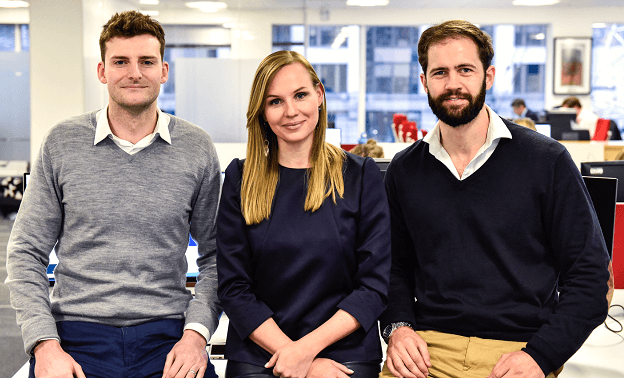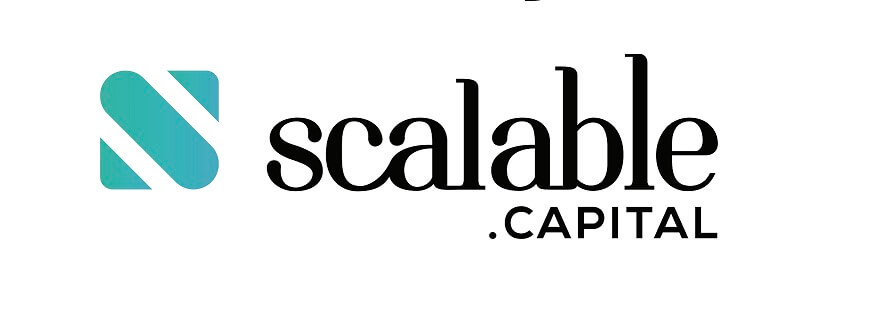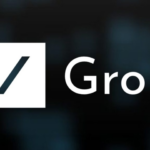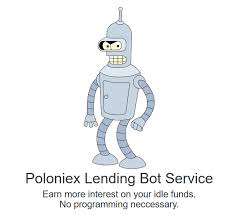Automated investing using Scalable.Capital
Robo Advisory Service Review with Adam French
Interview with Adam French, Founder and CEO of Scalable Capital
Can you describe the automated investment services offered by Scalable Capital?
Scalable Capital is an online investment manager, powered by technology. We provide our clients with personalised, globally-diversified investment portfolios designed to create long-term wealth. To do this, we select the best and most cost-efficient Exchange-Traded Funds (ETFs). We monitor and manage our clients’ portfolios continuously with our proprietary risk management technology.
What is the story behind the Robo Advisory service: Scalable Capital, who are the founders – how did the company start?
A few years ago, when we worked at Goldman Sachs, our friends often asked us “how should I invest my money”, but we didn’t have a good answer to that question, as we didn’t feel comfortable recommending any of the existing investment services available to consumers. So in 2014, we left our jobs and decided to create Scalable Capital. Our concept has really struck a chord with frustrated retail investors: in less than a year, we reached £100m of assets under management, making us the fastest-growing online investment manager in Europe.
We are currently live in 3 countries (UK, Germany and Austria) and over 3,000 clients trust us with their savings. We have raised £8.8 million and we employ a team of 45 experts, with more than half working in our engineering team. Having seen the success of our model, financial institutions have also begun partnering with us. Siemens Private Finance, for example, decided to partner with us in order to offer a wealth management solution for their employees in Germany.
What is the defining difference between Scalable Capital and other Robo-advisor platforms?
We have fundamentally changed investing by using technology at the heart of our service. People choose us because we are not using the ‘same old, same old’ investment concepts dressed up in an attractive design. Unlike any other provider, we don’t just use technology to deliver a more accessible, transparent and cost-efficient service, but we use technology at
the core of our investment model.

By removing human emotion and irrational decision-making from the investment process and instead using technology, we offer our clients more protection from ‘bad behaviour’ than ever before. We believe in risk management. We pick up tremors of volatility in the markets and then adjust our portfolios according to each client’s individual risk tolerance. This ensures that the portfolios of our clients never exceed the level of risk that they are comfortable with, or that they end up in a portfolio that is too conservative and miss out on potential performance. We combine an active management of risk with passive financial instruments (ETFs) by automatically adjusting asset class weightings if a portfolio threatens to violate its risk category. We call this dynamic risk management and believe that it creates portfolios that work in all market environments.
What are the key advantages that Scalabla.Capital is offering to investors?
Our investment approach delivers three key customer outcomes:
1. Better understanding of risk.
We offer 23 different risk categories, ranging from 3% to 25% annual value-at-risk (VaR). For example, if a client is in risk category 12%, then with 95% certainty that client will not lose more than 12% in a given year. By using VaR, a quantified risk metric, for our portfolios instead of working with arbitrary terms such as “medium risk” or “5 out of 10” we give our clients a better understanding of how much risk is in their portfolio. This is a fundamental difference to the traditional way of doing things, and we’re the first ones to offer such an improved understanding of risk to investors.
2. Better risk-adjusted returns.
By focussing specifically on the risks in our clients’ portfolios, we aim to capitalise on markets where risk is rewarded with higher returns, and limit exposure to asset classes during periods of higher than usual risk where exposure to risk can lead to negative returns.
3. Less emotional stress.
By keeping risk stable in all market conditions, we help our clients stay invested in the capital markets for longer so they can grow their wealth for their future.
What is the fee structure, for the subscribers to your automated investing services?
Our fee is 0.75% per year of the total assets under management. This fee is taken directly from our clients’ portfolios on a monthly basis. The fee includes investment management and trading costs as well as the custody charges. The ETFs used in our portfolios have an average expense ratio of 0.25%. These costs are directly deducted from the performance of the ETFs and charged by the ETF providers (on top of the fee we charge). There are no hidden costs, exit charges or any other fees.

Adam French, Founder and CEO
Why is rebalancing of investment portfolios automatically more efficient than re-balancing manually?
It is important to understand the difference between our dynamic asset allocation and what other providers mean when they say rebalancing. Typically, when other providers say they are ‘re-balancing’, it means that a portfolio’s asset allocation is periodically adjusted back to its original allocation, for example, 60% equities and 40% bonds.
Our approach is very different. We measure each portfolio’s value-at-risk and adjust its allocation when required. Instead of keeping weights constant over time, we, therefore, keep risk constant over time. This is what investors ultimately care about, and it helps them to achieve their goals in two ways. Firstly, by giving them more peace of mind and helping them stay invested during times of market turbulence. Secondly, by improving the returns they are getting for every unit of risk they are exposed to.
The idea of dynamically managing portfolios based on their projected risk level has been used in investment management before, but only for very large portfolios of institutional investors. We are now able to make it accessible to retail investors for the first time because we have used technology to deliver a scalable and cost-efficient investment process.
Do robo advisors and automated investment platforms perform better in bull or in bear markets?
All robo advisors are not created equal. In fact, the term itself is highly misleading, as most online investment managers don’t offer advice – instead, they manage their clients’ portfolios for them, which is in some ways a more comprehensive service than giving advice. How they will perform in different market regimes depends on their investment strategy. At Scalable Capital, we believe it’s important to focus on risk-adjusted returns and not simply absolute returns. By monitoring portfolio risk and making adjustments to control investors exposure, our approach targets better risk-adjusted returns than a classic buy and hold strategy. Our investment model keeps risk consistent by adjusting the allocation between asset classes to deliver the optimal portfolio in all market conditions.
Will your service be open to all European residents?
Digital investment management needs to have a pan-European approach. We are currently active in the UK, Germany and Austria, and can accept clients from other EU countries as long as they want to invest in Euro and have a Euro-denominated bank account. We may passport to other parts of Europe including France, Italy and the Netherlands, in order to be able to actively market our service there and offer it in the local language. Switzerland, which as a non-EU state requires a separate license, is also under consideration.

Will your service be open to non-European residents, if so which ones?
In the long run, we see Asia and the US as a big opportunity for growth. But it’s too early to tell if and when we might be expanding beyond Europe.
Where can investors find performance statistics for Scalable.Capital?
We recently published the 1-year performance of our Euro-based portfolios that are managed out of our German business. It is available here: https://de.scalable.capital/erzielte-rendite. In the UK, we do not have the history required to publish our performance on our website but for our higher risk categories (15-25% VaR) which have the longest history (prior to the date of the EU referendum), portfolio returns were in the range of 19-22% up to 31 December 2016.
Does Scalable Capital have profit sharing relationships with the ETFs it has available on the platform?
No. Scalable Capital is 100% independent. We are really proud of this and want people to know how important this is when they trust us to manage their money. As an independent company, we are able to be completely transparent with any and all costs associated with managing accounts. We have no incentives to invest in any way other than to maximise the wealth of our clients.
How is risk managed within the portfolios of clients?
At Scalable Capital, we use percentages to give investors a precise understanding of their risk exposure. As previously mentioned, they represent a potential annual loss, which is referred to as the Value-at-Risk (VaR). The VaR should not be exceeded with a probability of 95%, which means if the VaR were 12%, only once in 20 years should a loss greater than 12% occur. By making risk explicit, using percentages, we ensure clients know how much downside risk they are taking.
If at any time a portfolio threatens to exceed the agreed downside risk, a risk-reducing portfolio reallocation is carried out. And vice versa if the portfolio threatens to become too conservative, as this could lead to lower returns.
The ultimate result for clients is simple: the risk in their portfolio is maintained at the level they set it at so regardless of how risk is fluctuating on the financial markets.
Which types of invesments are available on Scalable.capital?
We invest globally into 6 major asset classes: equities, government bonds, corporate bonds, real estate, commodities and money markets. The ETFs we use give our investors access to all the major asset classes listed above, with approximately 8,000 individual securities spread across over 90 countries.
We’re constantly screening the market to ensure our clients have the best ETFs in their portfolios. Focusing on a multitude of quantitative and qualitative factors we ensure that the ETFs in our clients’ portfolios are low-cost, highly liquid, have low tracking errors and to the extent possible use physical instead of synthetic replication. This service itself is very much appreciated by our clients, who would otherwise have to face the burdensome task of reviewing each of the around 1,500 ETFs available to European investors. It also means that when a better ETF comes to market we move our clients into this new ETF in an efficient manner.
In your opinion, given the ever increasing choice of investments and investment platforms, how can investors navigate through this maze effectively?
Before the advent of online discretionary investment managers, investors had to go to the fund supermarket and pick their own product. Now you have an investment service which takes the DIY pain away from investors by providing a fiduciary service. Investors no longer have to go to the supermarket to pick their ingredients (funds) but can go to a restaurant (discretionary service).
They still have to pick which one though.
What should investors watch out for when choosing an automated investing platform / robo advisor?
1. Are investment decisions the result of the opinions of a human investment manager? There is ample evidence that human investors, even professional ones, are subject to emotional bias and are limited in their capacity to process data correctly.
2. What are the fees (annual costs, costs of the underlying funds and performance fees)?
3. How strong is the team behind the service?
Given the proliferation of new investment tools on the market, it seems that new generations have a different mindset to investing than previous ones. Do you think that this will this have an impact on the price discovery mechanisms of the market and or equity valuations?
Is an increase in the use of passive instruments likely to reduce the efficiency of markets through lack of price discovery?
Answer – No, not at all. Whilst, in theory, if an entire market became passive only, then you would lose price discovery and have inaccurate equity valuations, the reality is that only a small portion of the market would be required to be active to maintain efficiency. Currently, around 80% of market participants are active managers and a large amount of research has demonstrated that the majority of these managers underperformed their passive equivalents. The shift of “new generations” towards passive instruments to reduce unnecessary costs, achieve broad diversification and invest for the long term is a good thing for everyone except the active manager.
You can find more information on Scalable.capital by visiting:
Scalable.capital

We thank Adam French for the interview.











